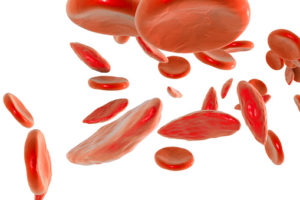Hyperhemolysis Syndrome (HS) is a rare, potentially fatal condition characterized by the development of severe anemia after transfusion in which post-transfusion hemoglobin levels are lower than pre-transfusion values. HS is usually associated with patients who have sickle cell disease but has also been reported in patients with other conditions. In order to gain a better understanding of the mechanism and risk factors associated with HS, researchers at Johns Hopkins retrospectively analyzed data from 41 patients with 54 episodes of HS over a 26-year period. Median hemoglobin values dropped from 6.1 g/dL before transfusion to a nadir of 4.1 g/dL after transfusion; over 40% (22/54) of the HS episodes occurred in patients with infections; only 50% (26/52) of the HS episodes were associated with a positive direct antiglobulin test with 40% detecting complement (21/52); and new alloantibodies were identified in 22% (19/54). Based on multivariate analysis with matched controls, non-B blood type (odds ratio (OR), 9.8), D antigen (OR, 9.1), more than one alloantibody (OR, 17.3), and infection (OR, 5.5) were significant risk factors associated with HS. An in vitro model of bystander hemolysis suggested that HS may be caused by up regulated normal RBC senescence mechanisms, but further studies are required to better understand the mechanism of HS and to develop better therapies.
Reference:

